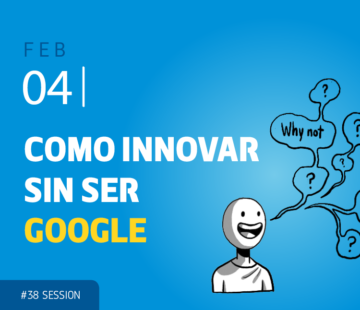3 cases of the still unusual case of companies leveraging innovative ideas from their employees

Taking a look to the close to 200 post already published in this blog, we surprise ourselves realizing how scarce mentions and examples on co-innovation with employees are. We just did once and it was three years ago. Probably the main reason is that not many informed success cases have come to our attention during this time. As we wrote back then “Co-innovation with employees not directly linked with innovation functions it’s still unusual.”
And still continues to be. But willing to mend this lack, we decided to highlight three historic successful cases of corporations bringing together the creative talent of their employees to drive innovation; three corporations that understood how companies can benefit from the ideas of each of its employees, regardless of function, status, skills or seniority.
AT&T’s The Innovation PipelineAT&T stablished in 2009 The Innovation Pipeline (TIP), a dynamic online crowd-sourcing platform for their employees worldwide. AT&T employees using TIP submit product suggestions online to be shaped, refined, and voted on by other employees. The top ideas are pitched to “Angel Investors” (company executives who act as venture capitalists) to determine funding. Approved proposals then move to other phases of incubation including Prototyping, Production, and Commercialization.
Through their process, the platform has been able to overcome abysmal 70% change failure rate and achieve continuous innovation. TIP has attracted more than 130,000 active members from 54 countries, leading to more than 30,000 different ideas and $44 million in seed funding to develop the best ones. Part of the positive results from the initiative are many AT&T notable launches including NumberSync, the product of an employee who wanted to have a backup emergency phone; DriveMode, the brainchild of a call center operator who was personally affected by texting-while-driving; and SmartMic, the creation of a first year employee that turns a smartphone in a wireless microphone.
Part of the success of TIP relies in their open and transparent nature of their processes, in which everyone is able to see who these innovators are, how they worked, and the successes they achieved. TIP opened up lines of communication up, down, and across the geographically dispersed system, eliminating miles of red tape and stifling bureaucracy.
ORANGE idClic
Orange initiated in 2007 idClic as an engagement platform for their 170.000 employees. The process for leveraging their innovative ideas is similar to the one implemented by AT&T: The employee issues an idea, the insight is appreciated by an expert (among the 5,100 involved in the process), and in the case of a favorable opinion, a feasibility study is triggered with an estimate of the net gains before it is put into operation in pilot mode and, depending on the results, deployed nationally. The author of the contribution integrates the project team and is awarded with “talents” and “bonuses” to make the idea real. He participates in all stages of the project until the evaluation of the result.
Since its implementation, this engagement platform has collected 122,000 ideas. 1 in 3 employees submitted at least one idea during this period. A big contribution to the success of the tool is the high percentage of ideas finally deployed, about 12.000, a 10% of all submitted. These ideas allowed Orange to generate hundreds of millions of euros in savings. idClic has become a financial windfall for the group, but the company’s CEO has insisted in several interviews on the importance of it as a motivation tool.
According to him, “employees see idClic as an opportunity to get out of their daily lives”. By having this platform if an employee has an idea, instead of just being able to tell their direct boss, now it is possible to access to a much wider “audience”. Beyond becoming a “cash machine”, idClic turned out to also meet the expectations of “Generation Y”, identify and value potentials and talents; and release the expression beyond the classical organizational framework.
Swiss Post “PostIdea”
With over 60.000 employees, Swiss Post is the second largest employer in Switzerland. In 2011 the company implemented an innovation software to allow staff from different departments and locations to share new business ideas in an organized, structured environment. PostIdea is employing a standard workflow where ideas are voted on by a crowd, and then sent to experts for score-card evaluation. The company offers monetary awards and online recognition. Top 30 innovators get to attend special VIP events which could be anything from a golf tournament to visiting an interesting venue.
Differently to other similar initiatives looking for new products or services to market, Swiss Post was primarily interested in tackling the challenge of process improvement and waste reduction. Therefore, one of the main goals of the platform is to promote best-practice sharing. For example, an individual worker discovered that he could save 20 minutes every week through an innovative schedule adjustment. Once the process confirmed his idea could legitimately be utilized by other workers, the platform then automatically invited specific relevant users to adopt this best-practice.
PostIdea has been used also for another Swiss Post big challenge related to the business practice of tech-scouting. The tool integrated a module to transfer scouting ideas into an internal Swiss Post workflow platform called Swiss Post network that now allows any employee to contribute to scouting initiatives.
